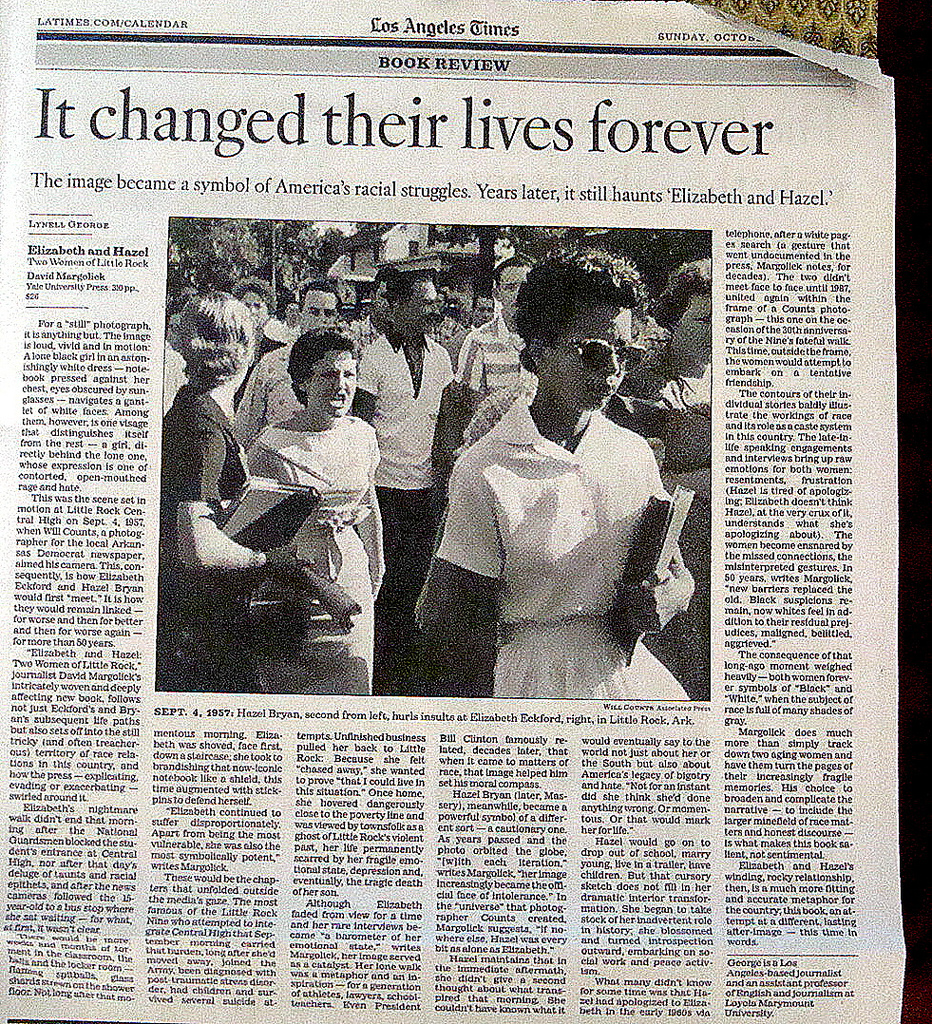Sunday Inspiration: Elizabeth & Hazel
 When I read this inspirational article, “The Many Lives of Hazel Bryan,” over MLK weekend, I was deeply moved.
When I read this inspirational article, “The Many Lives of Hazel Bryan,” over MLK weekend, I was deeply moved.
Some of us still remember that tense time in the fall of 1957 when 9 courageous black kids integrated Central High School in Little Rock. It may be hard to believe today that the governor of Arkansas sent the National Guard to block their way. But the Federal government — Eisenhower was president at the time — forced Governor Orval Faubus to back down.
Look closely at the famous photo of Elizabeth Eckford walking through a phalanx of angry, jeering students and adults, and you can sense the racial divide and prejudice of that time. Two faces stand out, that of Elizabeth, stoic, scared, using every once of courage to walk through that crowd. And the face of the 15 year old girl behind her, Hazel Bryan, spewing racial slurs and hatred at Elizabeth.
The article tells us that though Elizabeth & Hazel came from two very different worlds, they eventually reconciled and even became friends. If only the story could end there, but read the article and find out what happened to this fragile relationship that takes this from being a “black and white” fairy tale ending to one that is more realistic about how difficult it is to overcome our differences.
In their own ways I think both Elizabeth & Hazel are goddesses. Along with so many others, they tried and made a difference in a deeply troubled society. I hope that someday Elizabeth & Hazel have the real reunion they deserve.
If we all had our worst moments at age 15 captured in that way and replayed over the last 55 years, we wouldn’t be happy about it either. So sad that it’s still affecting these two women in a negative way. I have friends from the south, raised with those negative attitudes and we choose to not discuss those differences because it would accomplish nothing and we are not only one thing, one note. It would be a wonderful thing if there weren’t these types of prejudices.